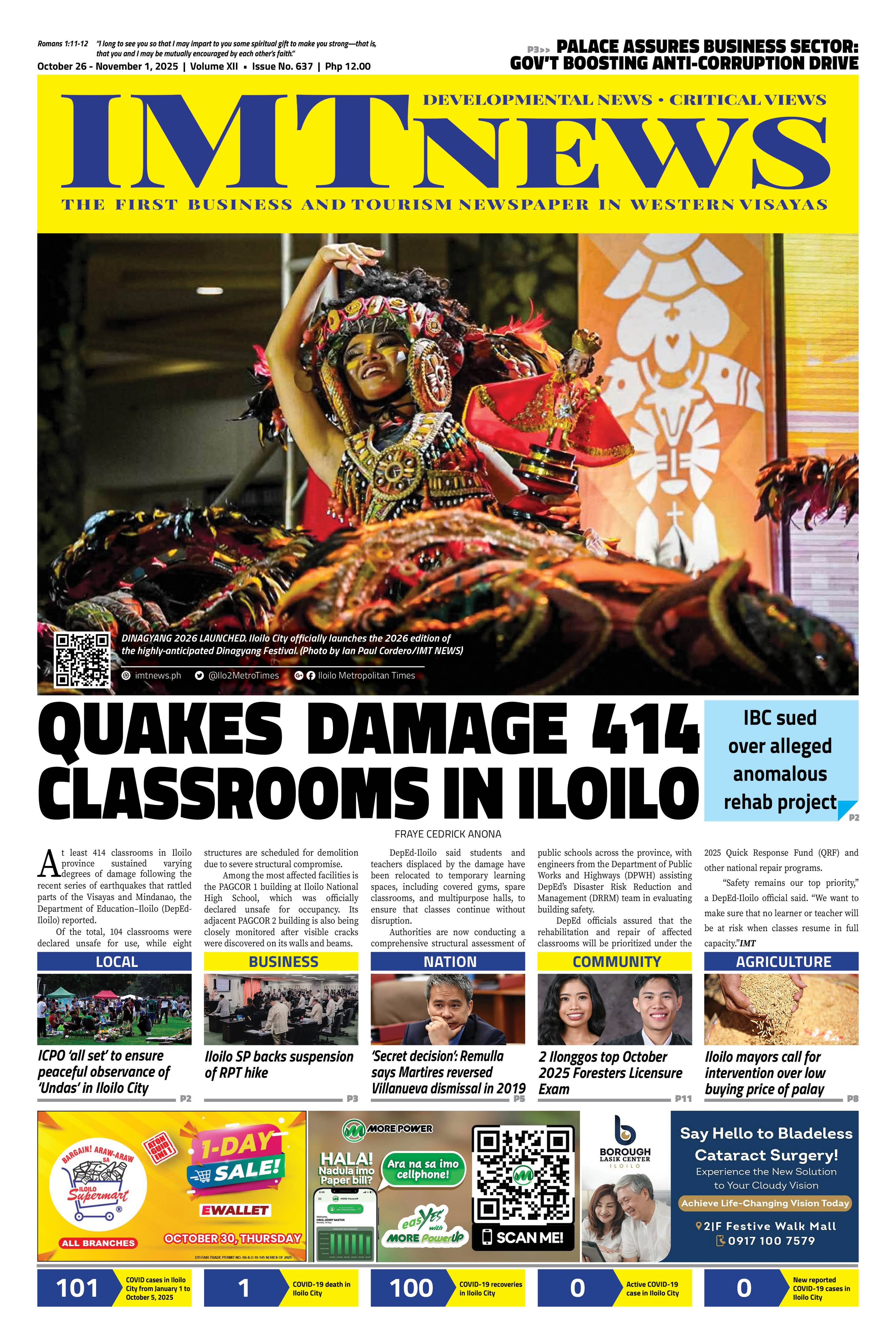A remarkable addition to contemporary Philippine children’s literature has emerged in Nagmalitong Yawa: A Modern Retelling of an Ancient Story of a Fierce Filipina Heroine (Certeza & Sons CHMG Publishing Corporation, 2024), written by Kat Gomez-Limchoc and illustrated by Karen Francisco. Though the book saw publication in the previous year, it only recently found its way into my hands through the generosity of the author herself, who expressed her earnest hope that this work might be introduced more widely to the local literary and reading communities of Iloilo, especially in anticipation of the forthcoming Iloilo Children’s Book Fair (ICBF) this November. This event, aligned with the celebration of the Philippine National Children’s Month and the National Book Month, provides a timely and apt venue for such a significant literary endeavor.
Upon first encountering the book, both in its material form and its visual presentation one is immediately struck by its exceptional production quality. The printing, the texture of the paper, and the vibrancy of the illustrations undeniably meet, if not exceed, international standards. It is a book that invites neither apology nor hesitation when presented alongside its global counterparts; indeed, it can confidently stand shoulder to shoulder with the finest illustrated books produced in more established literary markets. Such excellence in production is still, regrettably, a rarity in the Philippines, where children’s books too often suffer from thin, low-quality paper, substandard binding, and poor color fidelity, as though subjected to minimal quality control. Thus, when I first held and perused this book by Kat and Karen, I could not help but feel a certain envy, a bittersweet recognition of the disparity between this work and the children’s books previously published here in Western Visayas.
For readers familiar with the traditional narrative of Nagmalitong Yawa, this rendition by Gomez-Limchoc is unmistakably a modern retelling, one that respectfully diverges from its epic source material while introducing new elements through both text and illustration. Details have been thoughtfully added or omitted, yet these creative liberties do not diminish the story’s essence; rather, they reframe it through a contemporary lens. This reimagining allows readers, both young and old to experience the tale anew, enriched by the distinctive artistry and interpretive vision of Gomez-Limchoc and Francisco. This version becomes not merely a retelling but a cultural translation, a deliberate and sensitive mediation between the past and the present, the local and the global.
To those with an intimate knowledge of the Sugidanun epics, it will be clear that Nagmalitong Yawa in this incarnation has undergone a thoughtful reinterpretation. Gomez-Limchoc and Francisco offer a perspective that bridges the traditional with the modern, making the fierce heroine’s legend accessible to today’s young Filipino readers and, potentially, to children beyond our shores. Their work exemplifies how indigenous narratives can be lovingly and intelligently recontextualized for a globalized generation, without forsaking the cultural integrity from which these stories originate.
It is not an exaggeration to say that this book represents an important contribution not merely to children’s literature but to cultural work at large. Through this project, Gomez-Limchoc, Francisco, and their collaborators affirm the enduring necessity of preserving and promoting the stories from our regions and remote communities. They demonstrate how Philippine narratives, when handled with both creative flair and cultural sensitivity, can achieve resonance far beyond their points of origin. Beyond the pleasure of reading, this book elevates our expectations of what children’s literature can offer, it integrates new technologies, inviting engagement through audio narration and musical accompaniment accessible via QR codes, thereby enhancing the reading experience in ways that acknowledge the evolving habits and preferences of today’s young readers.
Such an initiative must be recognized not merely as a creative achievement but as a cultural imperative. Writers and illustrators like Gomez-Limchoc and Francisco challenge us to reimagine the possibilities of reading for children. They urge us to innovate and elevate the literary experience, to capture the attention of young readers by offering them stories that are not only entertaining but also deeply reflective of their heritage. This book, in its thoughtful conception and execution, stands as a model for future endeavors in Philippine children’s publishing.
What is particularly commendable is Gomez-Limchoc’s evident respect for the Panay Bukidnon culture. Her writing demonstrates a careful consideration of key cultural concepts and terminologies, such as binukot, panubok, and sugidanon which she deliberately retains as part of her narrative, recognizing their importance as cultural markers. More importantly, it is evident that her creative process was informed by rigorous research and respectful consultation with the Panay Bukidnon community. She visited their communities, engaged with cultural bearers, and conducted ‘kid-testing’ with Panay Bukidnon children, an invaluable gesture of humility and respect that grounds the book not merely in creative imagination but in lived cultural realities.
Yet, one critical reflection must be offered, not as a detraction but as a point for further consideration. In projects such as this, where the source material is rooted in living oral traditions, it would have been an even more powerful act of cultural solidarity to recognize the original cultural custodians as co-authors. Acknowledging chanters and tradition bearers, such as Romulo C. Caballero, Rolando C. Caballero, Rodolfo C. Caballero, and Rita T. Caballero, as co-creators rather than mere consultants would not only honor their contributions but affirm the ethical stance of the creators as respectful cultural outsiders. Such recognition would extend beyond mere acknowledgment; it would embody a deeper, more meaningful practice of collaborative authorship, an act of reciprocity towards those whose narratives we seek to share with the world.
Nagmalitong Yawa shows us what becomes possible when literary artistry, cultural respect, and publishing excellence come together with purpose and heart. It reminds us that our country holds a vast wealth of stories still waiting to be honored, stories that deserve to be carried forward with care, imagination, and integrity. This book is not merely a retelling; it is an act of reclaiming, a celebration of cultural memory, and above all, a heartfelt invitation. It calls on children, readers, and storytellers alike to recognize that these stories are not relics of the past, they are living, breathing voices that continue to shape who we are, and who we can still become.
Noel Galon de Leon is a writer and educator at University of the Philippines Visayas, where he teaches in both the Division of Professional Education and U.P. High School in Iloilo. He serves as an Executive Council Member of the National Commission for Culture and the Arts-National Committee on Literary Arts.






